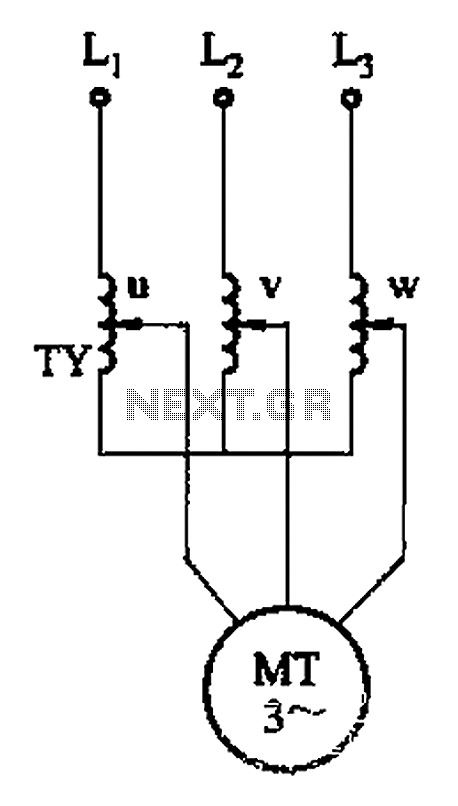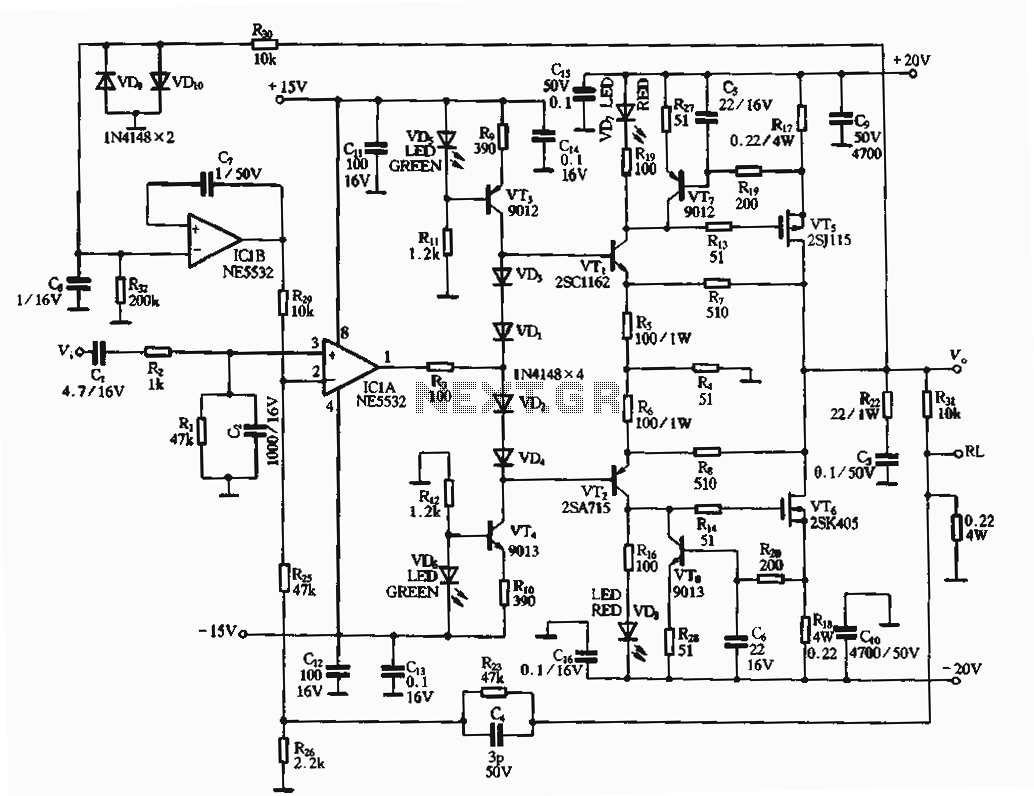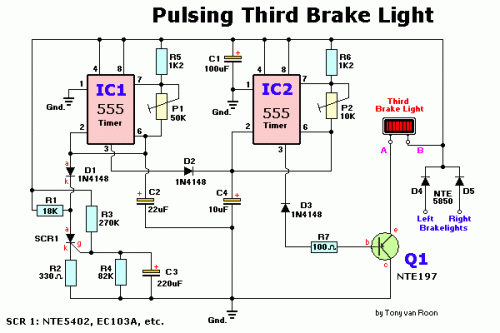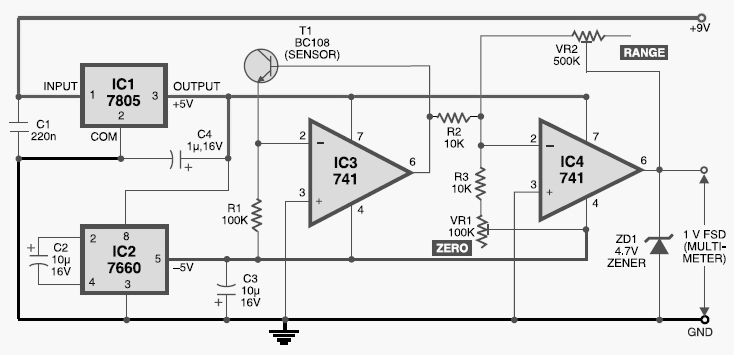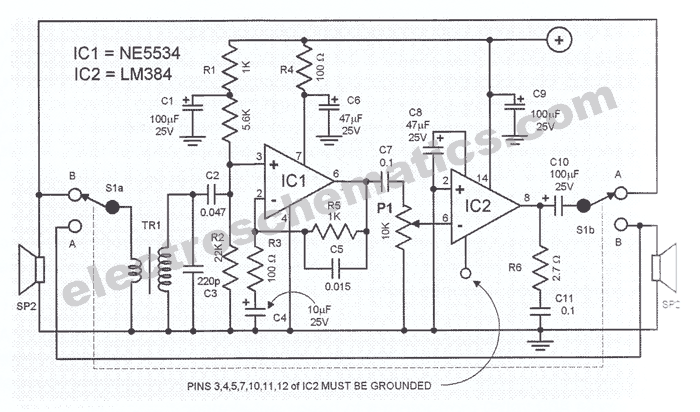
circuit schematic symbol for buffer with control input
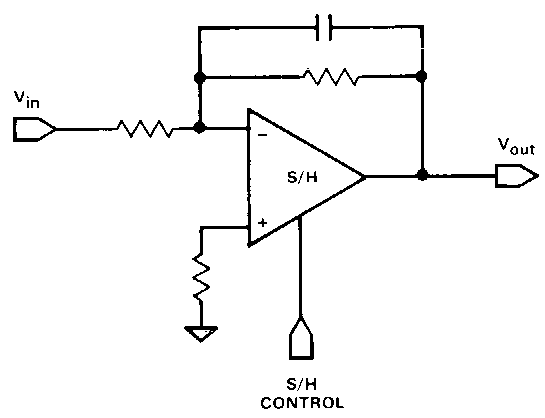
Circuit 1kZ incorporates an operational amplifier (op-amp) component with two inputs, one output, and up and down ports, typically utilized for power supply rails. Additionally, there is a buffer component, which is likely provided by TikZ itself rather than the Circuitikz library, featuring one input, one output, and no vertical ports. The requirement is for a buffer/amplifier with one input, one output, and vertical ports to serve as control pins. The intended application is for a track-and-hold (also known as a sample-and-hold) amplifier symbol, although tri-state buffers are also common and necessitate a control input. The referenced figure employs a two-input sample-and-hold amplifier, but a one-input version is envisioned to simplify the design, effectively creating a single symbol that conceals the underlying complexity for a high-level block diagram.
The circuit described employs an operational amplifier (op-amp) as the central component, which is essential in various analog signal processing applications. The op-amp configuration includes two inputs (inverting and non-inverting), allowing for differential signal amplification. The output port facilitates the delivery of the amplified signal, while the up and down ports are typically connected to power supply rails, ensuring the op-amp operates within its specified voltage range.
In conjunction with the op-amp, a buffer stage is introduced into the design. This buffer component serves to isolate the input signal from the output, preventing loading effects that could distort the signal integrity. The buffer is characterized by a single input and output, with the absence of vertical ports indicating a straightforward implementation. However, the requirement for vertical ports is noted, which would typically be utilized for control signals in various applications.
The application of a track-and-hold amplifier necessitates specific design considerations, as it captures and holds the instantaneous value of an analog signal for a defined period. The design of a one-input track-and-hold amplifier symbol aims to encapsulate the necessary functionality while minimizing visual complexity. This approach is beneficial in high-level block diagrams, where clarity and simplicity are paramount. The envisioned symbol would abstract the internal workings of the amplifier, allowing for easier interpretation and integration into larger circuit designs.
Tri-state buffers are another relevant component in this context, commonly used in digital circuits to control the flow of data. These buffers can be enabled or disabled, allowing for multiple outputs to share a common bus without interference. The inclusion of control inputs in the design of these buffers further enhances their versatility in various applications.
Overall, the circuit design emphasizes the importance of operational amplifiers and buffer stages in analog signal processing, while also considering the need for control mechanisms in more complex configurations. This comprehensive approach ensures that the schematic effectively communicates the intended functionality while maintaining a high level of clarity for the user.circuit 1kz has an op amp component type with two inputs, output, and up and down ports, usually used for power supply rails. There`s also a buffer component type (which I think is provided by tikz itself, not the circuitikz library) which has one input and one output and no vertical ports.
I`m looking for a buffer/amp with one input, one output, a nd the vertical ports, for use as control pins. My use case is a track-and-hold (aka sample-and-hold) amplifier symbol, but a tri-state buffers are also very common and require a control input. Ok, that figure uses a two-input SHA. But I`m sure you can imagine what the one-input version should look like (basically, I`m trying to make a single symbol that hides all that complexity, for a high-level block diagram).
🔗 External reference
The circuit described employs an operational amplifier (op-amp) as the central component, which is essential in various analog signal processing applications. The op-amp configuration includes two inputs (inverting and non-inverting), allowing for differential signal amplification. The output port facilitates the delivery of the amplified signal, while the up and down ports are typically connected to power supply rails, ensuring the op-amp operates within its specified voltage range.
In conjunction with the op-amp, a buffer stage is introduced into the design. This buffer component serves to isolate the input signal from the output, preventing loading effects that could distort the signal integrity. The buffer is characterized by a single input and output, with the absence of vertical ports indicating a straightforward implementation. However, the requirement for vertical ports is noted, which would typically be utilized for control signals in various applications.
The application of a track-and-hold amplifier necessitates specific design considerations, as it captures and holds the instantaneous value of an analog signal for a defined period. The design of a one-input track-and-hold amplifier symbol aims to encapsulate the necessary functionality while minimizing visual complexity. This approach is beneficial in high-level block diagrams, where clarity and simplicity are paramount. The envisioned symbol would abstract the internal workings of the amplifier, allowing for easier interpretation and integration into larger circuit designs.
Tri-state buffers are another relevant component in this context, commonly used in digital circuits to control the flow of data. These buffers can be enabled or disabled, allowing for multiple outputs to share a common bus without interference. The inclusion of control inputs in the design of these buffers further enhances their versatility in various applications.
Overall, the circuit design emphasizes the importance of operational amplifiers and buffer stages in analog signal processing, while also considering the need for control mechanisms in more complex configurations. This comprehensive approach ensures that the schematic effectively communicates the intended functionality while maintaining a high level of clarity for the user.circuit 1kz has an op amp component type with two inputs, output, and up and down ports, usually used for power supply rails. There`s also a buffer component type (which I think is provided by tikz itself, not the circuitikz library) which has one input and one output and no vertical ports.
I`m looking for a buffer/amp with one input, one output, a nd the vertical ports, for use as control pins. My use case is a track-and-hold (aka sample-and-hold) amplifier symbol, but a tri-state buffers are also very common and require a control input. Ok, that figure uses a two-input SHA. But I`m sure you can imagine what the one-input version should look like (basically, I`m trying to make a single symbol that hides all that complexity, for a high-level block diagram).
🔗 External reference
Warning: include(partials/cookie-banner.php): Failed to open stream: Permission denied in /var/www/html/nextgr/view-circuit.php on line 713
Warning: include(): Failed opening 'partials/cookie-banner.php' for inclusion (include_path='.:/usr/share/php') in /var/www/html/nextgr/view-circuit.php on line 713

